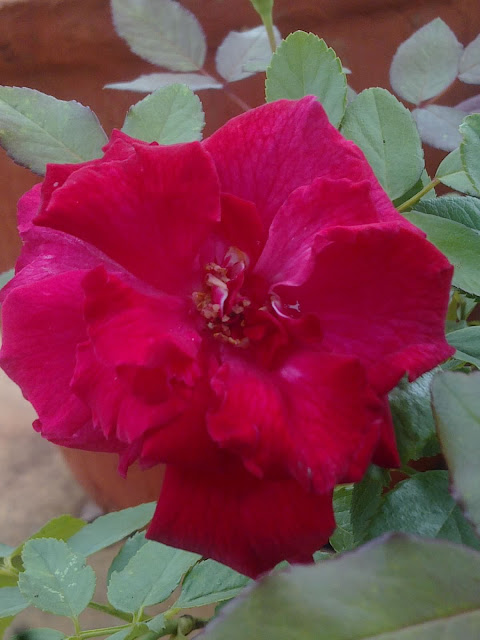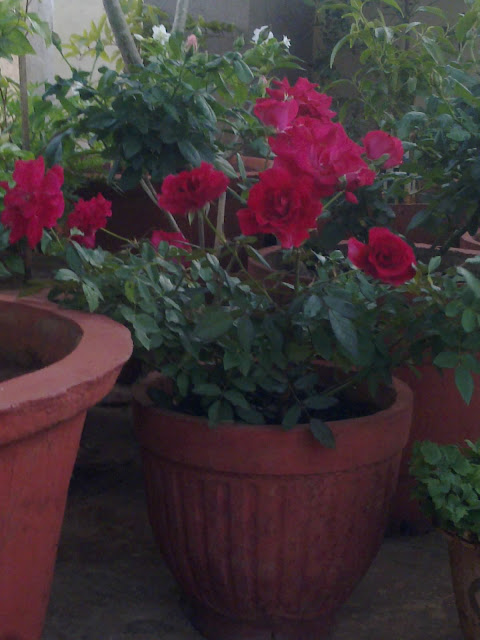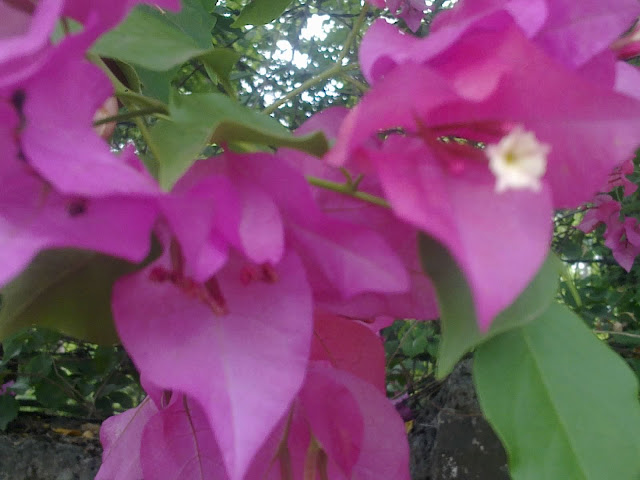The stunning colorful trumpet shaped flowers of the 4 o'clock(Mirabilis Jalapa) plant adds both color and beauty to any flower garden attracting birds,butterflies and bees alike.It is also known by other names such as Marvel of Peru,Beauty of the night,Bunga Pukul Empat,Shower flower,Sandhya Malati,Krishna keli,Gulabas,Chandramalli and Akashmuri.

The flowers bloom only in the evenings when the temperature drops and cools and the flowers wilt in mornings as the sunrises and new flowers open the following day.The flowers have a lemony sweet scent.The flowers are borne singly or in clusters.

The 4 o'clock(Mirabilis Jalapa) plant prefers full sunlight for optimum growth.The plant is a perennial and blooms profusely in the summers.It is a short shrub with green herbaceous smooth textured leaves.Most of the times if there are multiple colored flowers growing in a garden or in pots the chances of cross pollination are higher.
The 4 o'clock(Mirabilis Jalapa) plant is almost disease ,pest free and drought tolerant plant hence its a delight to grow,it can be grown in any type of soil ,water moderately as
4 o'clock(Mirabilis Jalapa) plant does not like to have wet feet,over watering can lead to root rot eventually killing the plant.


The flowers bloom only in the evenings when the temperature drops and cools and the flowers wilt in mornings as the sunrises and new flowers open the following day.The flowers have a lemony sweet scent.The flowers are borne singly or in clusters.
4 o'clock(Mirabilis Jalapa)can be grown as an ornamental plant and it is available in many shades such as Red,White,Yellow,Orange,White,
Pink,Magenta,sometimes with more than one color on the same plant.Bi colored flowers with stripes,spots,and flakes can also be grow similar to petunias. 4 o'clock(Mirabilis Jalapa)belongs to the Bougainvillea family the plant can be grown easily in pots or containers or in the ground as hedge plants.

The 4 o'clock(Mirabilis Jalapa) plant prefers full sunlight for optimum growth.The plant is a perennial and blooms profusely in the summers.It is a short shrub with green herbaceous smooth textured leaves.Most of the times if there are multiple colored flowers growing in a garden or in pots the chances of cross pollination are higher.
The plants can be easily propagated by seeds, the seeds can be directly sown into the soil no need for soaking the seeds before sowing them.The seeds look like tiny little black hand grenades.The seeds lose their viability so sow them as soon as you get them from the plant.Seeds germinate within a weeks time.
The flowers are often used as natural food coloring and dye.The dye obtained from the 4 o'clock(Mirabilis Jalapa) is used to color cakes and jellies.Various parts of the 4 o'clock(Mirabilis Jalapa) is used in tribal and folk medicine.4 o'clock(Mirabilis Jalapa) plant has the potential to reduce light traces of cadmium when planted in such polluted soils.
The 4 o'clock(Mirabilis Jalapa) plant is almost disease ,pest free and drought tolerant plant hence its a delight to grow,it can be grown in any type of soil ,water moderately as
This plant is perfect for people who go out to work and come back in the evenings. you can enjoy the flowers once your back after a long tiring day at work what a welcoming sight it would be.4 o'clock(Mirabilis Jalapa) is a fuss free no nonsense plant that does not need green fingers and fertilization it pretty much survives on its own.
The 4 o'clock(Mirabilis Jalapa) plant is self seeding it also considered as a invasive species because of its self sowing habit it can over take an entire garden if left unchecked.Once the flower falls of a seed begins to grow upon full maturation the seed turns black and falls off.
So if you want to add some color and cheer to your garden and make it look pretty and colorful at the same time go ahead and plant some 4 o'clock(Mirabilis Jalapa) in an array of colors and watch how your plain garden turns into a thing of beauty and awe.

Till then stay happy and keep on gardening !!























































